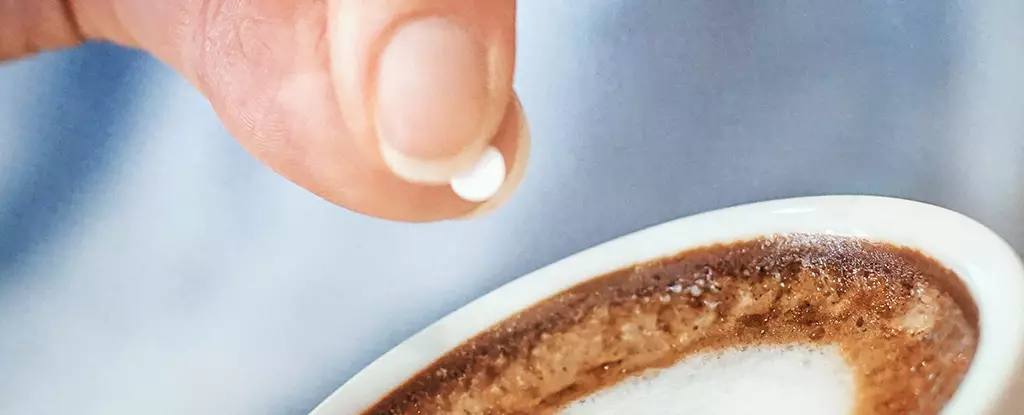Antibiotic resistance stands as a formidable threat in the realm of modern medicine, a relentless adversary that preys upon the vulnerabilities of our healthcare systems. With bacteria evolving to outsmart the medicinal agents that once rendered them harmless, the evolution of drug-resistant strains poses a growing challenge, leading to rising fatalities that reach into the millions annually. The urgency of finding effective solutions has never been more critical than it is today, evoking a global call to arms in the scientific community. In this context, recent findings suggest an unlikely candidate in the battle against these biological foes—saccharin, an artificial sweetener that has long divided opinions regarding its health implications.
New Frontiers in Bacterial Research
A team of researchers from Brunel University in the UK has uncovered novel insights that may redefine our perceptions of saccharin. Their controlled laboratory tests examined its interaction with various bacterial strains, leading to unexpected discoveries about the sweetener’s potential antibacterial properties. Saccharin, primarily known for enhancing flavor without calories, has now been identified as a disruptor of bacterial cell integrity. Ronan McCarthy, a microbiologist on the research team, characterized saccharin as an antimicrobial agent capable of demolishing bacterial walls and thus preventing their proliferation.
The implications of this discovery are profound. In a world where developing new antibiotics can take years and cost millions, the concept of repurposing an existing, widely-used compound sounds like a breath of fresh air. Saccharin may provide not only a new weapon against notorious pathogens like Staphylococcus aureus and Escherichia coli but might also allow current antibiotics to regain their former efficacy against drug-resistant strains.
Saccharin’s Role in Enhancing Antibiotic Efficacy
Digging deeper into the compound’s functionality reveals an exciting mechanism: the structural damage inflicted by saccharin on bacteria enables antibiotics to penetrate their defenses effectively. This twofold approach—combining saccharin’s destructive capabilities with traditional antibiotics—reveals a roadmap for enhancing treatments for infections that have increasingly become untreatable. The research underlines an innovative therapeutic paradigm that leverages the strengths of multiple agents against bacterial threats.
The ramifications of this finding could reverberate through the medical field, where the looming crisis of antibiotic resistance already poses a significant risk to procedures that depend on effective antibacterial prophylaxis and treatment, such as surgeries and cancer therapies. Saccharin’s introduction into this pharmacological arsenal could not only safeguard these essential healthcare services but also usher in a new era of treatment methodologies.
A Potential Game-Changer for Wound Care
Further investigations into saccharin’s potential highlight its capabilities beyond mere antibacterial functions. Researchers at Brunel University crafted a surgical dressing infused with saccharin, which demonstrated superior efficacy in diminishing bacterial load compared to conventional materials like silver dressings in preliminary tests on pig skin. This innovative application offers significant promise—not only could it reduce hospital-acquired infections, but it could also improve healing times, presenting clinicians with an effective tool for managing wounds in a world where antibiotic options are dwindling.
The Caution of a Double-Edged Sword
However, it is crucial to approach this development with caution. While the promise of using saccharin in medical applications is tantalizing, the full spectrum of its effects on the human body is still a matter of ongoing research. The potential for unintended health consequences from any artificial sweetener calls for a balanced perspective on its therapeutic use in wound care and infection management. A multi-faceted approach to understanding how saccharin interacts within the biological systems will be pivotal before it can be confidently integrated into clinical practice.
The exploration of saccharin’s antibacterial properties opens the door to innovative solutions in combating one of the most pressing dilemmas facing healthcare today. The intertwining paths of antibiotic development and effective implementation of existing compounds like saccharin could offer an impactful strategy, potentially diminishing the crisis of drug resistance while enhancing patient care in numerous facets of healthcare. The research presents a beacon of hope illuminated by the unlikeliest of allies—a sweetener often relegated to the fringes of dietary discussion. As we navigate this landscape, the scientific community must balance enthusiasm with vigilant inquiry to ensure that any new path forged is not only effective but also safe for future generations.


Leave a Reply